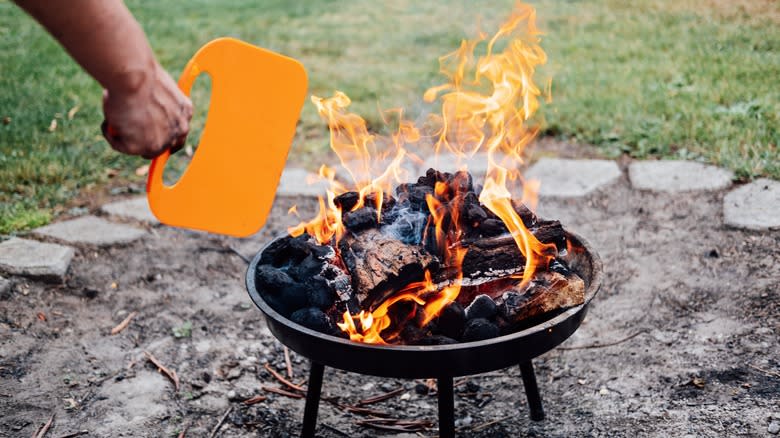Why You Should Always Use Real Charcoal When Grilling Steaks

For lovers of meat, few dishes can top a steak. The food showcases the beauty of beef in its most stripped down form: a well-chosen cut seared to perfection. Yet, although straightforward in its premise, many considerations are necessary to craft a tasty rendition.
One of the most important factors is the heat source. After all, mastering how to cook the perfect steak every time is really having an understanding of when meat meets fire. So if the weather's cooperating, and you opt for the grill, make sure to settle for real charcoal. Lump coals are irregular in size and pricier, but they're also all-natural, which translates to a more flavorful steak. Plus, you can even select the type of wood, inflecting steak with a distinct aromatic note.
The ubiquitous charcoal briquettes work in a pinch, but they're comprised of wood scraps that contain additives. These function as binders, ignition aids, and ash-whitening agents, which negatively impact the taste. Plus, they won't get quite as hot as lump, preventing an extra-nice sear. So especially if you have one of the best ranked cuts of steak on hand, the coal selection is worth the extra effort.
Read more: Your Guide To The Different Cuts Of Steak
Real Charcoal Translates To A More Flavorful Steak

Loading up a charcoal grill and throwing on a steak can be a surprisingly complex endeavor. There are many types of charcoal to consider, each one altering the cooking process. In addition to the broad categories -- like lump, briquette, or the highly sought-after binchotan -- grill masters even compare specific brands side-by-side. Each one offers a distinct combination of flavor and heating capabilities, with some smoking more, and others attaining quick heat-up times. So tailor based on your tastes -- perhaps you want a New York strip with an extra smoky note, or a thicker ribeye seared on high heat.
Such detailed selections may seem trivial, but if steak enthusiasts place such extraordinary care into the cut selection, why not extend to the heat source. After all, it's the convergence of a tasty salt seasoning, well-managed heat, and the aromatic smoke that results in a steak with an indescribable magic. And if you're really feeling extra brave regarding the charcoal and meat connection, you should start grilling steak directly on the charcoal.
Read the original article on Tasting Table.


